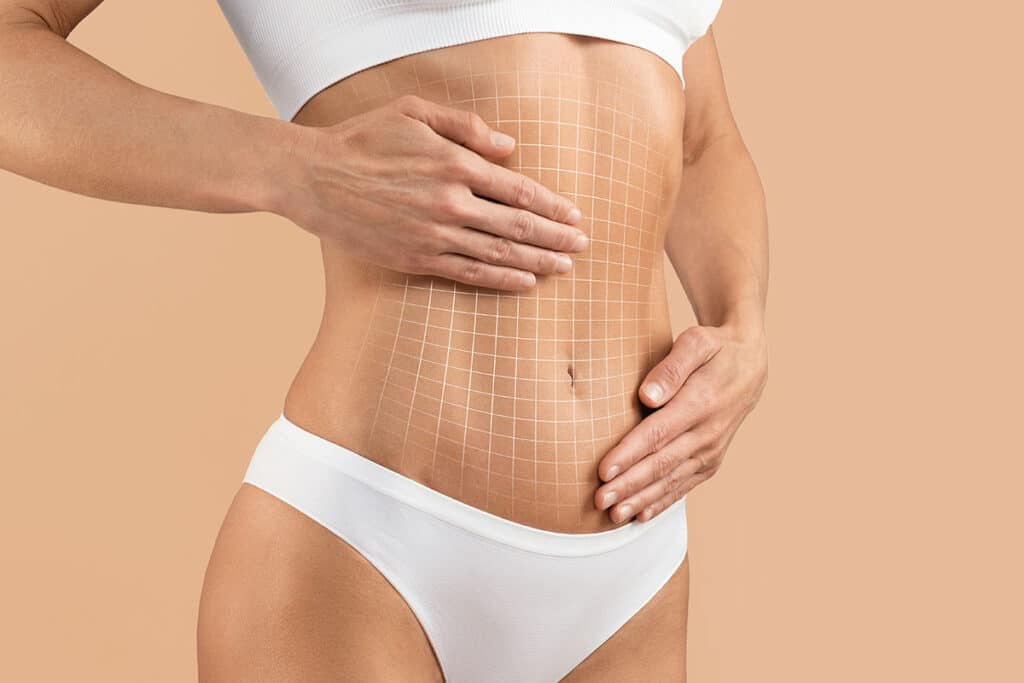Liposuction is a popular cosmetic procedure that removes excess fat from different areas of the body, giving you a slimmer and more contoured appearance. While the procedure itself is relatively straightforward, the recovery process plays a crucial role in achieving the best possible results. In this article, we will provide you with useful tips on how to heal faster after liposuction, ensuring a smooth and successful recovery.

Understanding the Liposuction Recovery Process
It is important to understand the different stages of recovery after liposuction. This will help you know what to expect and how to take care of yourself during each phase.
The Initial Post-Operative Stage
Immediately after your liposuction procedure, you will be taken to a recovery area where you will be closely monitored by medical professionals. During this time, you may experience some discomfort, swelling, and bruising. Your surgeon may provide you with pain medication to manage any pain or discomfort.
Follow all post-operative instructions, including wearing compression garments and avoiding strenuous activities. Rest is crucial during this stage to allow your body to start the healing process.
During this phase, it is normal to experience drainage from the incision sites. Your surgeon will provide you with specific instructions on how to manage this and how to change your dressing if necessary.
Additionally, you may be advised to elevate the treated areas to help reduce swelling. This can be done by propping pillows under your legs or using specialized foam wedges designed for post-operative recovery.
Furthermore, maintaining a healthy diet during this stage can aid in the healing process. Consuming foods rich in vitamins and minerals can provide the necessary nutrients for your body to repair itself.
The Intermediate Recovery Phase
This phase usually begins a few days after your liposuction procedure. Your swelling and bruising may start to subside, and you may gradually notice improvements in your body’s contours. However, it is crucial to remember that everyone’s healing timeline can vary.
During this phase, your surgeon may recommend light activities such as short walks to improve blood circulation. Keeping your body moving in a gentle manner can aid in reducing swelling and preventing blood clots.
Continue wearing your compression garments as instructed and avoid any activities that may strain your body. Maintaining a healthy diet and staying properly hydrated also play a crucial role in your recovery during this phase.
In addition to physical recovery, it is important to address your emotional well-being during this phase. Some patients may experience temporary mood swings or feelings of frustration due to the initial results not being fully visible yet. It is essential to be patient and trust the healing process.
Engaging in relaxation techniques such as deep breathing exercises or meditation can help alleviate stress and promote a positive mindset during this stage of recovery.
The Final Healing Stage
This stage usually occurs several weeks after your liposuction procedure. Most of your swelling and bruising should have subsided, and you may start to see the final results of your liposuction. However, it is important to note that your body will continue to heal and refine its contours over the next few months.
Your surgeon may gradually allow you to resume normal activities during this phase. However, it is essential to listen to your body and avoid any activities that may cause discomfort or strain.
Follow-up appointments with your surgeon are crucial during this stage to monitor your progress and address any concerns or complications that may arise. Your surgeon will provide you with specific instructions on how to care for your incision sites and any remaining swelling.
During this final healing stage, it is common for patients to experience a boost in self-confidence as they witness the full transformation of their body. Embracing and celebrating these positive changes can contribute to a healthy body image and overall well-being.
It is important to maintain a healthy lifestyle even after the final healing stage. Regular exercise, a balanced diet, and self-care practices can help sustain the results achieved through liposuction and promote long-term satisfaction.
Essential Tips for a Faster Liposuction Recovery
Undergoing liposuction is a significant step towards achieving your desired body shape. However, the recovery process is just as important as the procedure itself. To ensure a faster and smoother recovery, it is crucial to prioritize rest, maintain a healthy diet, and stay hydrated.
Prioritizing Rest and Sleep
Resting and getting enough sleep are vital components of a faster recovery process. Your body needs time to heal, and overexerting yourself can hinder the healing process. Listen to your body’s cues and give yourself the rest you need.
When sleeping, it is advisable to use pillows to elevate the treated areas, reducing swelling and promoting optimal blood flow. Elevating the affected areas can also help alleviate discomfort and promote faster healing.
Additionally, consider incorporating relaxation techniques such as deep breathing exercises or meditation into your daily routine. These practices can help reduce stress and promote a sense of calm, aiding in the recovery process.
Maintaining a Healthy Diet
A balanced and nutritious diet is crucial for a speedy recovery after liposuction. Focus on consuming a variety of fruits, vegetables, lean proteins, and whole grains. These foods provide the essential nutrients your body needs for healing.
Include foods rich in vitamins A, C, and E, as they have antioxidant properties that can help reduce inflammation and promote tissue repair. Citrus fruits, leafy greens, and nuts are excellent sources of these vitamins.
Avoid consuming excessive amounts of sodium and processed foods, as they can lead to water retention and prolonged swelling. Instead, opt for natural, unprocessed foods that are low in sodium and high in nutrients.
Consider consulting with a nutritionist or dietitian to create a personalized meal plan that caters to your specific dietary needs during the recovery period.
Staying Hydrated
Drinking enough water is essential for overall health and plays a vital role in your body’s healing process. Adequate hydration helps flush out toxins, reduces swelling, and promotes healthy blood circulation. Aim to drink at least eight glasses of water per day.
In addition to water, you can also incorporate hydrating foods into your diet, such as watermelon, cucumbers, and celery. These foods have high water content and can contribute to your overall hydration levels.
It is important to note that while staying hydrated is crucial, avoid excessive alcohol consumption as it can dehydrate the body and hinder the recovery process.
Furthermore, consider using a moisturizing lotion or cream on the treated areas to keep the skin hydrated and prevent dryness or irritation.
By prioritizing rest, maintaining a healthy diet, and staying hydrated, you can significantly enhance your liposuction recovery process. Remember to follow your surgeon’s post-operative instructions and attend all follow-up appointments for a successful and satisfying outcome.
The Role of Physical Activity in Liposuction Recovery
Gentle Exercises for the Early Recovery Phase
During the initial stages of recovery, gentle exercises can help improve blood circulation and reduce the risk of blood clots. Your surgeon may recommend simple activities like short walks or stretching exercises. Always consult with your surgeon before starting any exercise routine.
Gradually Increasing Activity Levels
As you progress through your recovery, your surgeon will provide guidance on gradually increasing your activity levels. Engaging in light aerobic exercises and strength training can help tone your body and support the healing process. However, it is important to avoid high-impact activities or anything that causes pain or discomfort.
The Importance of Follow-Up Appointments
Monitoring Your Progress
Attending follow-up appointments with your surgeon is crucial to monitor your progress. Your surgeon can assess any remaining swelling, address any concerns, and ensure you are healing properly. Following their recommendations will help you achieve the best possible outcome.
Addressing Potential Complications
In some cases, complications may arise during the recovery process. Follow-up appointments allow your surgeon to identify and address any potential issues. If you experience severe pain, excessive swelling, or any other concerning symptoms, contact your surgeon immediately.
Emotional Well-being During Liposuction Recovery
Managing Post-Surgery Emotions
It is common to experience a range of emotions during the recovery process. You may feel excited, anxious, or even a bit down at times. It is essential to be patient with yourself and give yourself time to adjust to your new body. If you have concerns about your emotional well-being, consider seeking support from friends, family, or a professional counselor.
Seeking Support and Counseling
If you find yourself struggling emotionally after liposuction, do not hesitate to seek support. Talking to a licensed therapist or counselor can provide you with the necessary tools to navigate your emotions and help you feel more confident and content with your body.
By following these tips and understanding the different stages of recovery after liposuction, you can help promote a faster healing process and achieve the best possible results. Remember to consult with your surgeon for personalized advice and guidance throughout your recovery journey. So feel free to contact us today for an initial consultation.
